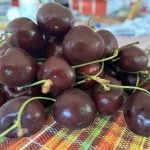MINNEAPOLIS, Minn. – The food on the menu of the Fire Lake Grill House immediately strikes the diner as unusual and exotic.
Most downtown hotel restaurants don’t offer a walleye hash with asparagus and wild rice as a main breakfast offering.
What’s strange about it is that it is a menu based on food that’s been hiding in plain sight: local farm products.
Unlike most restaurants in the city, on the American Great Plains and on the Canadian Prairies, this restaurant offers almost exclusively food produced by local farmers.
Read Also

Communication key to bridging generation gap
Each generation is shaped by the predominant forces at play during their formative years. Acknowledging these influences can improve communication among the generations.
It’s not a flaky hang-up or a political commitment to supporting local farmers regardless of culinary effect. Chef Paul Lynch said his dedication to locally produced ingredients comes from his commitment to fine cuisine.
“It’s the right thing to do,” said Lynch in an interview.
“It produces better food. As a chef, the bottom line is about flavour. By buying regional, local, seasonal food, I deliver better flavour.”
Lynch, who has worked as a chef in Hawaii and Texas, was one of the organizers of the Heartland Food Network, which brings together farmers and chefs so that restaurants can offer locally produced food.
It’s part of the regional cuisine movement that has been developing throughout North America in recent years, but appears to be far more developed in Minneapolis, probably due to Lynch’s efforts.
He had been trying to find as many ingredients as possible in the local area, but that meant “hours and hours on the phone.” But at a food conference in Minneapolis he found like-minded chefs and interested farmers, so an informal network was formed.
As it developed, Lynch formed relationships with local farmers, but still found it difficult to get the goods from the farmer to his kitchen. So he contacted “the evil empire,” his humorous term for the giant food distribution systems that supply the restaurant industry.
To his shock Sysco, North America’s largest restaurant industry provisioner, was excited by the idea and immediately began organizing farm to restaurant food flow. Sysco would deliver packaging supplies to the farms and pick up their products to take to local restaurants.
Lynch has a discerning and demanding clientele of business travellers and downtown dwellers who are used to fine food, so he hasn’t been willing to cut quality to “be local.” But his point is that local is fresher and tastes better. He believes local food is an edge his menu has compared to menus offered by most restaurants.
“They know they’re having a unique, distinct experience,” said Lynch of his customers.
“They know they aren’t eating in New York, or Atlanta, or someplace else. They are engulfed in the taste of this place. It’s not cookie cutter. It’s not Italian sausage and quesadillas.”
Depending on the season that taste includes local pork, beef, elk, chicken, asparagus, strawberries, raspberries, apples, wild rice, tomatoes and butternut squash.
Right now the menu offers a carrot-rhubarb soup.
Lynch acknowledges that some local people mocked his early enthusiasm for local products while he was developing his offerings.
“They said: what’s it going to be? Unflavoured meatloaf and mashed potatoes all day?”
But soon the mocking stopped and the local audience began realizing what was possible with midwestern, farm country products. And they began to see their own character revealed in the food on the menu.
“We’re pure. We’re straightforward. And we’re likable, we believe,” said Lynch.
“Let the food be great where it is.”















